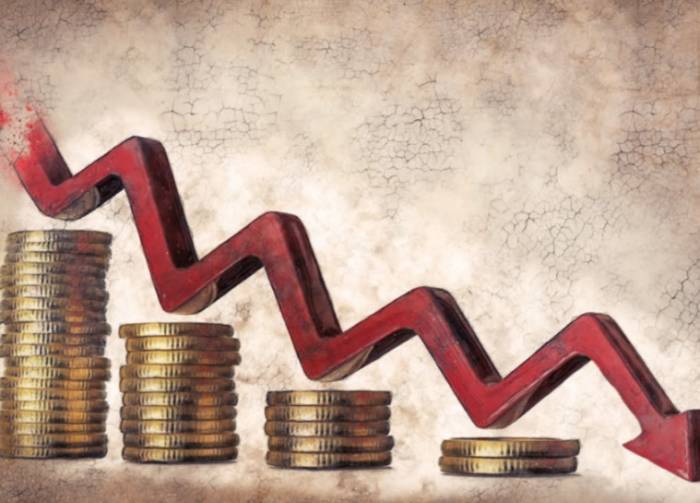New Share Reduction Rules' Impact on A-Shares
News
In a significant development in China’s financial landscape, new regulations governing share reductions by major shareholders have officially come into effect. This initiative marks a vital overhaul built upon the 2017 regulations known as "Several Provisions on Shareholding Reduction by Shareholders, Directors, Supervisors, and Senior Management of Listed Companies." The evolution of this framework demonstrates a commitment to refining the governance of publicly traded companies in the A-share market.
The change was first publicly discussed in April 2023, when authorities sought input from stakeholders. After a careful review and subsequent revisions based on these consultations, the finalized regulations aim to fill the gaps that previously existed in the A-share reduction practices, providing a stronger safety net for investors and the marketplace as a whole.
At the core of the new regulations is an emphasis on the conduct of controlling shareholders, particularly those who hold a majority stake or exert significant influence over the companies. The regulations not only close loopholes that allowed shareholders to sidestep the rules but also tie the possibility of share reduction to specific scenarios such as stock price declines, broken net asset values, or unfulfilled dividend payment commitments. This comprehensive approach indicates consideration of a wide range of factors affecting shareholder behavior.
Advertisement
For instance, under the new rules, controlling shareholders and actual controllers are prohibited from reducing shares through centralized bidding or block transactions during times when the company’s stock has fallen below its initial issuance price or its net asset value. Given the current state of the A-share market, where numerous companies are trading below their initial public offering (IPO) prices, this stipulation places considerable limitations on major shareholders’ ability to liquidate their holdings – ensuring they can no longer exploit the situation to the detriment of smaller investors.
Furthermore, the regulations address the increasingly common issue of “fake divorces” – a maneuver where controlling shareholders create false scenarios to reduce their shares indirectly. To mitigate this, the new provisions stipulate that in any event of divorce or division that results in the splitting of shares, all parties involved must adhere to the existing reduction restrictions for an extended period. This measure is expected to significantly diminish the practice of dodging share reduction limitations.
In addition to curtailing these dubious tactics, the regulations explicitly prohibit major shareholders from engaging in short selling through margin trading or participating in derivative transactions involving their company stock. These amendments are crucial in assuring that major stakeholders cannot engage in practices that would lead to market manipulation or insider trading.
Historically, some companies have even resorted to “shorting” their own stocks, particularly prior to the prohibition of lending restricted shares. In such scenarios, major shareholders sought innovative ways to liquidate their assets, often at the expense of the broader investment community.
The rationale behind instituting a lockup period for shares is to prevent scenarios where shareholders with low acquisition costs could liquidate their interests prematurely, unfairly impacting retail investors. The previous loopholes regarding share lending had been a source of contention in promoting fair market practices. The comprehensive ban on the lending of restricted shares ultimately serves to fortify the integrity of capital market operations.
Beyond the issue of restricted share lending, major shareholders have explored alternative methods to monetize their assets. One such tactic involved exploiting the T+0 trading rule applicable to margin trading, which provided opportunities for arbitrage or effectively “shorting” their own stock under the guise of legal transactions. However, since March 18, 2023, margin trading regulations have shifted to a T+1 model, thereby harmonizing trading practices across the board.

Despite these rigorous regulations aimed at clamping down on share reduction loopholes, a pressing question remains: why do major shareholders often rush to liquidate their holdings post-IPO rather than opt for a long-term investment approach that aligns with the growth trajectory of their companies?
This phenomenon may be influenced by several interconnected factors.
Initially, the intense speculative activity surrounding newly listed stocks often leads to inflated valuations, where companies that might have initially sold shares at 20 yuan each can see their stocks trading as high as 50 yuan. Given that the acquisition prices for major shareholders are typically much lower than the market rates, the temptation for reduction certainly increases with the lure of substantial returns.
Moreover, the prevailing investment culture within the A-share market has fostered an environment that glorifies quick financial gains and “get-rich-quick” schemes. With frequent market oscillations characterized by “bulls” that are short-lived and elongated “bears,” investors frequently prioritize immediate returns over sustained growth. Many investors come to perceive that gradual wealth accumulation is nearly impossible in the current market setting.
Additionally, the lengthy time frame prior to an IPO catalyzes a mentality among business founders, where the moment their company’s shares are publicly traded, they may be inclined to contemplate exit strategies instead of engaging in long-term operational management. In numerous cases, companies start at their market zenith post-IPO, only to slowly descend into the harsh realities of prolonged bear markets.
The introduction of the most stringent share reduction regulations in A-share history may alleviate some pressure on major shareholders to divest. However, this move has not fundamentally addressed the intent behind their decisions to reduce holdings. The recurrent pattern of share reductions and circumvention of rules suggests an underlying detachment from the company's operational management; thus, it raises a pressing need for structural changes.
Encouraging major stakeholders, directors, and senior management in publicly traded companies to prioritize sustainable business practices and the long-term enhancement of their companies’ market values is imperative. Fostering a mindset of shared growth and accountability among shareholders and management will be key to restoring investor confidence in the A-share market. Only through collaborative efforts can we hope to witness the revitalization of stakeholder engagement and trust on this platform.